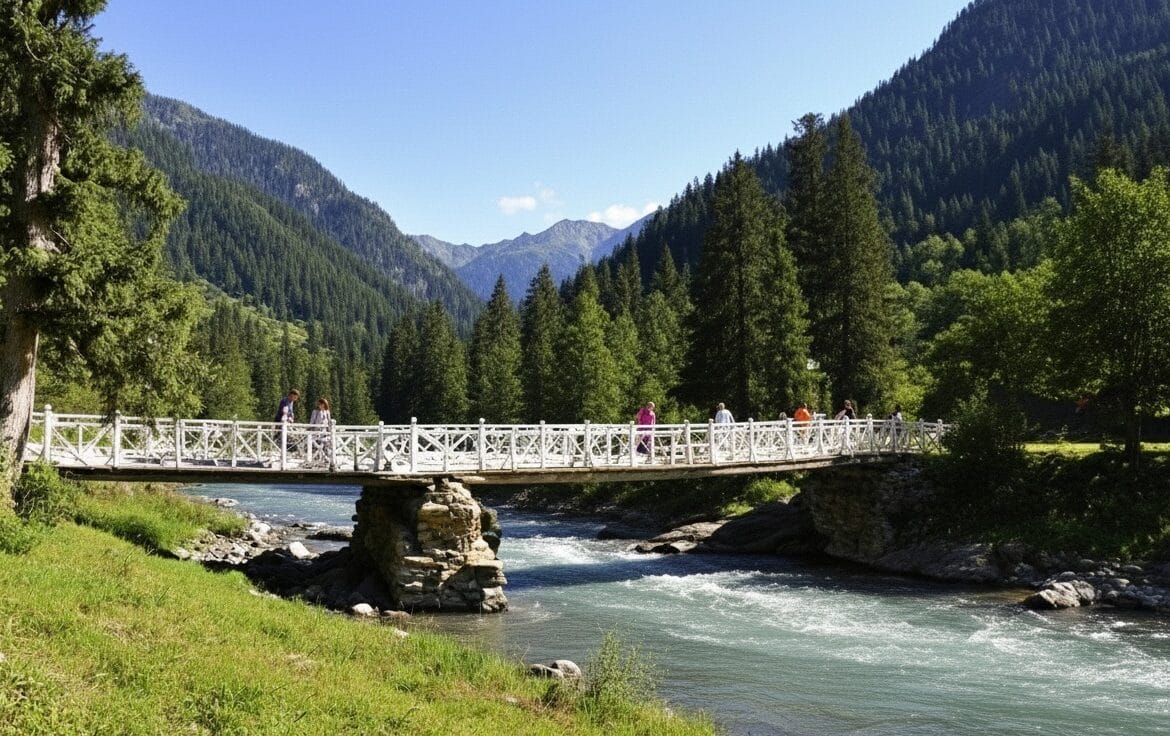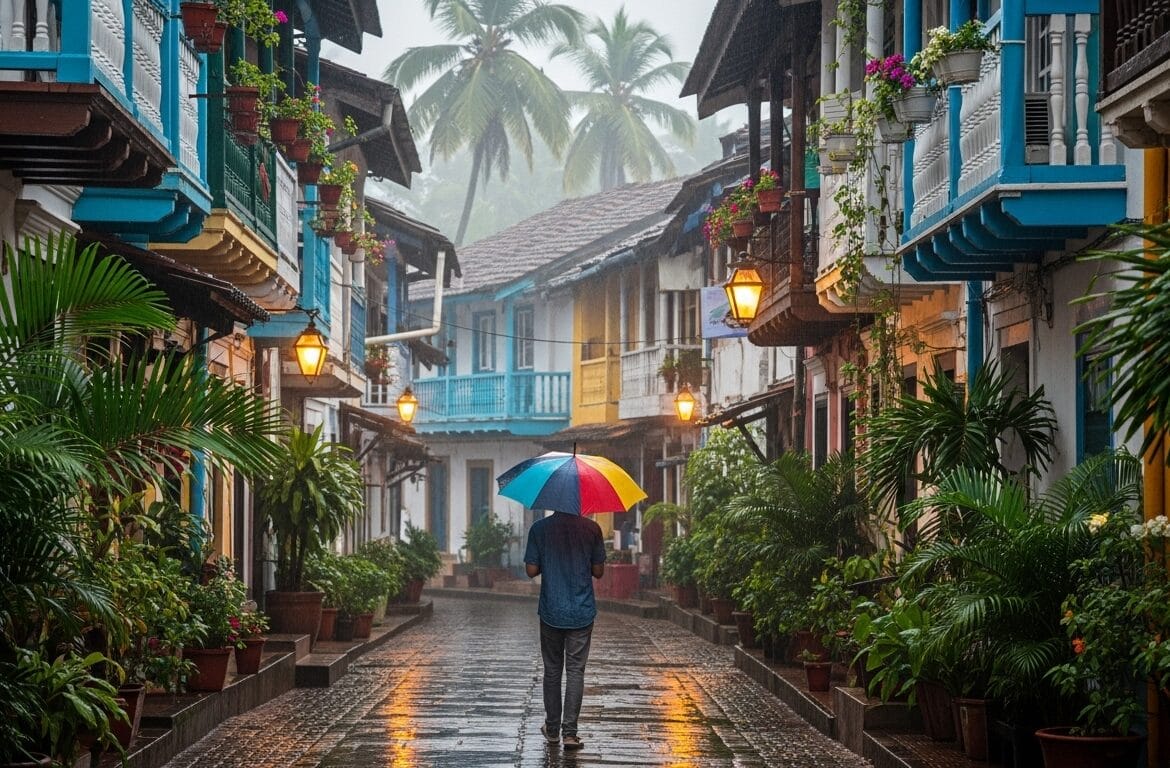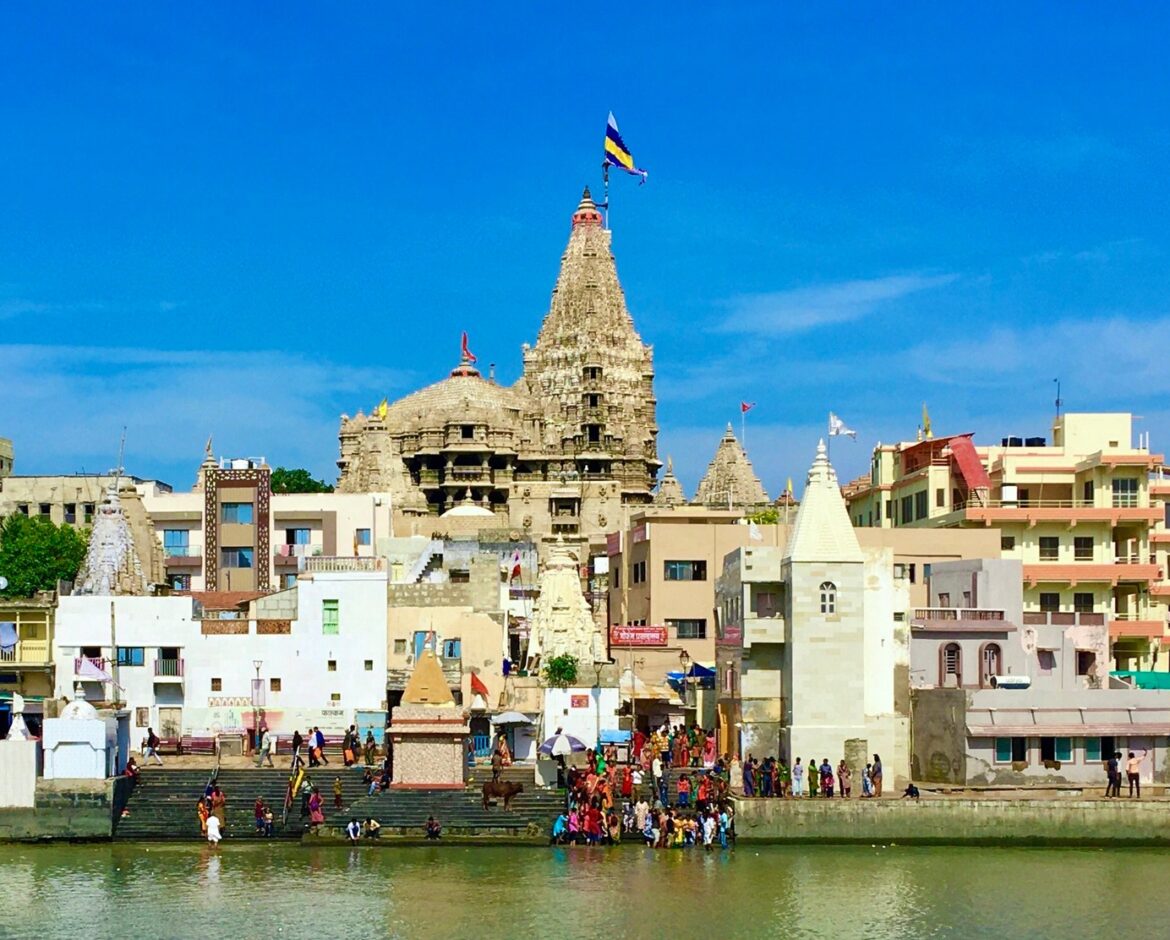बारिश, सुकून और थोड़ी शरारत: गोवा सिर्फ आपके लिए
चलिए, एक पल के लिए उस गोवा को भूल जाते हैं जो पोस्टकार्ड पर दिखता है। उस भीड़ को भूल जाइए जो सूरज ढलते ही एक जैसी तस्वीरें खींचती है। उस शोर को भी, जो हर साल दिसंबर में अपने चरम पर होता है।अब एक दूसरे गोवा की कल्पना कीजिए।एक ऐसा गोवा जहाँ सुबह की शुरुआत बालकनी में बैठकर होती है, हाथ में कॉफी का कप होता है और सामने हरे-भरे धान के खेतों पर बारिश की बूंदें एक शांत संगीत बना रही होती हैं। जहाँ सड़कें खाली होती हैं, और स्कूटर चलाने का मज़ा दोगुना हो जाता है। जहाँ समंदर शांत नहीं, बल्कि अपनी पूरी ताकत से गरज रहा होता है, और आपको किनारे पर खड़े होकर बस उसे देखने का मन करता है।यह गोवा का मानसून है। और यकीन मानिए, यह गोवा का सबसे बेहतरीन और सबसे ईमानदार रूप है। यह वो गोवा है जो अपनी सबसे अच्छी कहानियाँ सिर्फ समझदार मुसाफिरों को सुनाता है।
 तो, आप किस कहानी का हिस्सा बनना चाहेंगे?
तो, आप किस कहानी का हिस्सा बनना चाहेंगे?
यह सवाल गोवा में हमेशा पूछा जाता है, भले ही आप उसे सुनें नहीं। इसका जवाब तय करता है कि आप नॉर्थ जाएंगे या साउथ।
नॉर्थ गोवा में एक चुंबकीय ऊर्जा है। यह उन लोगों के लिए है जो रात के सन्नाटे में भी ज़िंदगी की धड़कन सुनना चाहते हैं। लेकिन अब यह सिर्फ टिटो लेन तक सीमित नहीं है। असली मज़ा तो असागाओ और वागातोर की पहाड़ियों में है, जहाँ देश के कुछ सबसे बेहतरीन रेस्टोरेंट और बार छिपे हैं। यहाँ की शामें लंबी, बातचीत गहरी और कॉकटेल शानदार होते हैं। यह वो जगह है जहाँ आप नए लोगों से मिलते हैं, और हर शाम एक नया रोमांच लेकर आती है।और फिर
साउथ गोवा है। यह एक धीमी, गहरी साँस की तरह है। यहाँ का जीवन समंदर की लहरों की तरह, एक सुकून भरी लय में चलता है। यहाँ के समुद्र तट, जैसे पालोलेम और अгоonda, आपको खुद से बात करने का मौका देते हैं। यहाँ के लक्ज़री रिसॉर्ट्स आपको दुनिया से कट जाने का बहाना देते हैं। यह जगह उन जोड़ों के लिए है जो एक-दूसरे का हाथ थामकर बस भीगी रेत पर चलना चाहते हैं, या उन लोगों के लिए जो अपनी किताब के साथ घंटों बिता सकते हैं, और जिन्हें बैकग्राउंड में सिर्फ बारिश की आवाज़ चाहिए।
जब समंदर आराम करता है, तब असली गोवा जागता है
मानसून में, गोवा आपको समुद्र तट से दूर अपनी असली आत्मा को खोजने के लिए आमंत्रित करता है।
- सभ्यता की गलियों में खो जाइए: पंजिम का फॉन्टेनहास (Latin Quarter) इस मौसम में किसी यूरोपीय शहर जैसा लगता है। इसकी रंगीन पुर्तगाली हवेलियों और शांत गलियों में घूमना एक कला की तरह है। हर कोना एक कहानी कहता है, और हर दरवाज़ा एक रहस्य की तरह लगता है।
- स्वाद जो याद रह जाए: गोवा का खाना इस मौसम में और भी स्वादिष्ट लगता है। किसी पुराने, पारिवारिक रेस्टोरेंट में मसालेदार पोर्क विंदालू का आनंद लें। या फिर काजू से बनी स्थानीय शराब 'फेनी' का एक शॉट लेकर देखिए। यह आपको अंदर तक गर्म कर देगी और गोवा की मिट्टी का असली स्वाद देगी।
- थोड़ा रोमांच, थोड़ी शरारत: मंडोवी नदी पर तैरते कैसिनो में एक शाम बिताने का अनुभव ही अलग है। यह सिर्फ जुआ नहीं है; यह ग्लैमर, संगीत, और एक ऐसी रात है जहाँ आप थोड़ी देर के लिए अपनी सारी चिंताएँ भूल सकते हैं।
- प्रकृति के सबसे बड़े spectacle का गवाह बनें: अगर आपमें रोमांच है, तो दूधसागर झरने की यात्रा ज़रूर करें। मानसून में यह झरना नहीं, बल्कि एक शक्तिशाली दहाड़ता हुआ समंदर लगता है। जीप में बैठकर घने जंगलों से होकर गुज़रना और फिर उस अद्भुत दृश्य को देखना, यह एक ऐसा अनुभव है जो आपको हमेशा याद रहेगा।
गोवा का मानसून एक एहसास है। यह धीमी सुबह, लंबी दोपहर और शांत रातों का नाम है। यह वो समय है जब आप गोवा को उसकी पूरी रूह के साथ महसूस कर सकते हैं। यह भीड़ के लिए नहीं है। यह आपके लिए है।तो, क्या आप गोवा के इस दूसरे, ज़्यादा खूबसूरत चेहरे से मिलने के लिए तैयार हैं?
 गोवा में अजनबियों से मुलाकात: बारिश, रोमांस और कुछ अनकहे पल
गोवा में अजनबियों से मुलाकात: बारिश, रोमांस और कुछ अनकहे पल
कुछ जगहें सिर्फ घूमने के लिए नहीं होतीं; वे आपको बदलने के लिए होती हैं। गोवा एक ऐसी ही जगह है। खासकर तब, जब मानसून के बादल आसमान पर राज करते हैं और दुनिया थोड़ी धीमी, थोड़ी गहरी हो जाती है।यह उस गोवा की कहानी है जो आपको भीड़-भाड़ वाले बीच पर नहीं मिलेगा। यह उस गोवा के बारे में है जो दो लोगों के बीच एक शांत बातचीत में, एक अजनबी की मुस्कान में, या बारिश में भीगते हुए एक अचानक बने प्लान में मिलता है। यह वो जगह है जहाँ कनेक्शन बनाना उतना ही स्वाभाविक है जितना लहरों का किनारे पर आना।
नॉर्थ या साउथ? असल में आप चुन रहे हैं कि आप किससे मिलना चाहते हैं
यह सवाल सिर्फ भूगोल का नहीं, बल्कि ऊर्जा का है।
नॉर्थ गोवा की हवा में एक बिजली सी है। यह उन लोगों के लिए है जो नए विचारों और नई कहानियों से टकराना चाहते हैं। यहाँ की शामें लंबी होती हैं, और असागाओ के किसी स्टाइलिश बार में एक कॉकटेल पर शुरू हुई बात कब गहरी दोस्ती में बदल जाए, कोई नहीं जानता। यहाँ आप लाइव म्यूजिक की धुन पर किसी अजनबी के साथ थिरक सकते हैं और महसूस कर सकते हैं कि आप दोनों एक ही कहानी का हिस्सा हैं। यह वो जगह है जहाँ आप रात के लिए अपना 'ट्राइब' ढूंढते हैं... और क्या पता, शायद उससे भी ज़्यादा समय के लिए।
साउथ गोवा, इसके विपरीत, एक फुसफुसाहट है। यह उन लोगों के लिए है जो या तो अपने साथी के साथ अपने रिश्ते को फिर से खोजना चाहते हैं, या फिर खुद के साथ एक गहरा रिश्ता बनाना चाहते हैं। यहाँ की शांत सुबहें लंबी, ईमानदार बातचीत को जन्म देती हैं। पालोलेम के किसी शांत कैफे में आप घंटों बिता सकते हैं, शायद बगल की टेबल पर बैठे किसी लेखक या योगी से आपकी दोस्ती हो जाए। यह वो जगह है जहाँ कनेक्शन शोर में नहीं, बल्कि सुकून में पनपते हैं।
वे पल, जिन्हें आप प्लान नहीं कर सकते
गोवा की असली खूबसूरती इसके नियोजित यात्रा कार्यक्रमों में नहीं, बल्कि उन अनियोजित "चमत्कारों" में है जो अजनबियों के साथ होते हैं।शायद यह फॉन्टेनहास की भीगी गलियों में किसी स्थानीय कलाकार से हुई मुलाकात हो, जो आपको अपनी छोटी सी गैलरी में ले जाकर अपनी कला का असली मतलब समझाए। या शायद यह किसी छोटे, पारिवारिक रेस्टोरेंट में हो, जहाँ मालिक आपको सिर्फ खाना नहीं, बल्कि अपनी माँ की रेसिपी का राज भी परोसे।
डेटिंग फैक्ट: गोवा में माहौल इतना खुला और स्वीकार करने वाला है कि यहाँ लोग अपनी बनावटी दीवारों को गिरा देते हैं। एक अध्ययन के अनुसार, छुट्टी पर लोग नए अनुभवों और नए लोगों से मिलने के लिए ज़्यादा खुले होते हैं। गोवा इस तथ्य को जीवंत कर देता है। यहाँ की हवा में एक तरह की आज़ादी है, जो लोगों को बिना किसी उम्मीद के, बस एक पल में जीने के लिए प्रोत्साहित करती है। यही वजह है कि यहाँ बने रिश्ते, चाहे वे एक शाम के हों या ज़िंदगी भर के, ज़्यादा सच्चे महसूस होते हैं।आप शायद किसी समुद्र तट पर एक किताब पढ़ रहे हों और कोई आपके पास आकर बस उस किताब के बारे में बात करने लगे। या आप दूधसागर झरने के रास्ते में जीप में बैठे हों, और आपके साथ बैठे अजनबी आपकी यात्रा के सबसे अच्छे दोस्त बन जाएं।ये हैं वो छोटे-छोटे चमत्कार। ये वो कहानियाँ हैं जिन्हें आप वापस ले जाते हैं। गोवा आपको सिखाता है कि कभी-कभी सबसे अच्छा ट्रैवल पार्टनर वो होता है जिससे आप यात्रा पर ही मिलते हैं।तो, जब आप इस बार गोवा जाएं, तो सिर्फ जगहों की लिस्ट लेकर न जाएं। एक खुला दिल लेकर जाएं। उस अजनबी से बात करने में संकोच न करें जो आपको मुस्कुराता हुआ दिखे। उस स्थानीय से रास्ता पूछें, और शायद आपको मंजिल से बेहतर कहानी मिल जाए।क्योंकि गोवा में, आप कभी अकेले नहीं होते। आप बस उन दोस्तों से दूर होते हैं जिनसे आप अभी तक मिले नहीं हैं।
कुछ सवाल जो शायद आपके मन में हों (A Few Questions You Might Have)
प्रश्न: आप मानसून में गोवा जाने की बात कर रहे हैं। क्या यह वाकई एक अच्छा समय है? क्या सब कुछ बंद नहीं हो जाता?
उत्तर: यह एक बहुत अच्छा सवाल है। हाँ, कुछ बीच शैक और अस्थायी रेस्टोरेंट बंद हो जाते हैं, लेकिन गोवा की असली आत्मा, यानी इसके बेहतरीन रेस्टोरेंट, आकर्षक बार, डिज़ाइनर स्टोर, और पुराने गाँव, हमेशा खुले रहते हैं। सच तो यह है कि मानसून में गोवा ज़्यादा प्रामाणिक लगता है। आपको कम भीड़, ज़्यादा हरियाली और बेहतर डील्स मिलती हैं। यह उन लोगों के लिए सबसे अच्छा समय है जो गोवा को उसकी शांति के लिए अनुभव करना चाहते हैं, न कि उसकी पार्टियों के लिए।
प्रश्न: अकेले यात्रा करने वालों, खासकर अकेली महिला यात्रियों के लिए गोवा कितना सुरक्षित है?
उत्तर: गोवा आम तौर पर भारत के सबसे सुरक्षित और स्वागत करने वाले स्थानों में से एक है, और बहुत सी अकेली महिला यात्री यहाँ एक अद्भुत समय बिताती हैं। यहाँ का माहौल काफी खुला और आरामदायक है। हालाँकि, दुनिया में कहीं भी यात्रा करने के सामान्य नियम यहाँ भी लागू होते हैं अपने आस-पास के बारे में जागरूक रहें, देर रात अनजान जगहों पर अकेले जाने से बचें, और अपनी सहज प्रवृत्ति पर भरोसा करें। नॉर्थ गोवा में असागाओ, वागातोर या मोरजिम जैसे क्षेत्र रहने के लिए अच्छे विकल्प हो सकते हैं जहाँ आपको एक अच्छी और सुरक्षित भीड़ मिलती है।
प्रश्न: आपने "कनेक्शन" और "डेटिंग" की बात की। क्या गोवा में नए लोगों से मिलना वाकई आसान है?
उत्तर: हाँ, और यह गोवा के जादू का एक हिस्सा है। यहाँ का माहौल बहुत सामाजिक है। लोग छुट्टियों पर होते हैं, वे ज़्यादा खुले और बात करने को तैयार होते हैं। यह ज़रूरी नहीं कि यह सिर्फ रोमांटिक "डेटिंग" के बारे में हो। आपको किसी कैफे में, योग क्लास में, या किसी लाइव म्यूजिक वेन्यू पर आसानी से दिलचस्प बातचीत करने वाले लोग मिल जाएंगे। यहाँ कनेक्शन सहजता से बनते हैं क्योंकि लोग अपनी रोज़मर्रा की ज़िंदगी की भागदौड़ पीछे छोड़ आते हैं। बस एक सच्ची मुस्कान और बात शुरू करने की थोड़ी सी हिम्मत चाहिए।
प्रश्न: मैं अपने पार्टनर के साथ यात्रा कर रहा/रही हूँ। मानसून में कुछ रोमांटिक आइडियाज़ क्या हो सकते हैं?
उत्तर: मानसून गोवा को जोड़ों के लिए एक सपने जैसा बना देता है। आप ये चीज़ें कर सकते हैं:
- साउथ गोवा के किसी लक्ज़री रिसॉर्ट में एक प्राइवेट विला बुक करें।
- एक स्कूटर किराए पर लें और गोवा के हरे-भरे, शांत गांवों से होकर गुज़रें।
- पंजिम के फॉन्टेनहास की रंगीन गलियों में एक-दूसरे का हाथ थामकर घूमें।
- समुद्र के नज़ारे वाले किसी अच्छे रेस्टोरेंट में कैंडललाइट डिनर करें, जहाँ आप बारिश को खिड़की से देख सकें।
- एक साथ एक कुकिंग क्लास लें और गोअन व्यंजन बनाना सीखें।
प्रश्न: मानसून में रात की ज़िंदगी (Nightlife) कैसी होती है? क्या सब कुछ शांत हो जाता है?
उत्तर: बिल्कुल नहीं! बस इसका रूप बदल जाता है। बड़ी ओपन-एयर पार्टियाँ भले ही कम हों, लेकिन असली मज़ा इनडोर वेन्यू में होता है। असागाओ, वागातोर और अंजुना के कई हाई-एंड बार और पब पूरे साल गुलज़ार रहते हैं। आपको लाइव बैंड, जैज़ नाइट्स और डीजे सेट सुनने को मिलेंगे। मंडोवी नदी पर तैरते कैसिनो भी 24/7 खुले रहते हैं। वास्तव में, मानसून की नाइटलाइफ़ अधिक अंतरंग और आरामदायक महसूस होती है।
प्रश्न: बारिश में स्कूटर चलाना कितना सुरक्षित है?
उत्तर: यह गोवा घूमने का सबसे अच्छा तरीका है, लेकिन सावधानी बरतना ज़रूरी है। धीरे चलाएं, अच्छी गुणवत्ता वाला हेलमेट पहनें, और फिसलन भरी सड़कों से सावधान रहें। अगर आप एक अनुभवी राइडर नहीं हैं, तो कार किराए पर लेना एक बेहतर और सुरक्षित विकल्प हो सकता है।



 तो, आप किस कहानी का हिस्सा बनना चाहेंगे?
तो, आप किस कहानी का हिस्सा बनना चाहेंगे? गोवा में अजनबियों से मुलाकात: बारिश, रोमांस और कुछ अनकहे पल
गोवा में अजनबियों से मुलाकात: बारिश, रोमांस और कुछ अनकहे पल